
Mark-Making: 5 Abstract Painters You Need To Know
Trends in Contemporary Art
Most often, people get lost in art history when we arrive at Conceptual Art. Art history indicates Modern Art originated with Edouard Manet (1832 – 1883) and Paul Cézanne (1839 – 1906) and their tendency towards abstraction, which would continue to develop throughout the first half of the 20th century, culminating in Abstract Expressionism in the 1940s and 1950s.
However, how did we arrive from abstract paintings to conceptual artworks in the form of installations, presenting found objects or no objects at all as the artworks? Furthermore, what is Conceptual Art? What are the main characteristics? Who are the most important conceptual artists? What about Conceptual Art today? And, as most might wonder, why is it important – or rather, why is it art in the first place?
Let’s discuss these frequently asked questions one by one in this complete overview article on Conceptual Art, presenting the world’s 25 most important conceptual artists.
Conceptual Art is a (historical) art movement from the 1960s and 1970s in which the idea functions as the artwork itself, shifting the value and quality of the artwork from the physical object to the immaterial concept.
The notion of the idea being the artwork results in a revolution in how one sees art and how one can or must approach it. For the artist, as well as for the viewer. The term originated in the 1960s in the United States of America. Fluxus artist Henry Flynt first wrote about ‘Concept Art’ in 1961, discussing art in which language is the main characteristic.
This term would soon change to ‘Conceptual Art’ by the iconic artist Sol Lewitt with his as iconic articles Paragraphs on Conceptual Art (1967) and Sentences on Contemporary Art (1969). Shortly after, the English artist collective Art & Language (cf. infra) published the first issue of their periodical Art-Language with the subtitle The Journal of Conceptual Art. Doing so, the emergence of this art movement in the mid-1960s was given a name, which would be entered and integrated into the art glossary with the turn of the new decade.
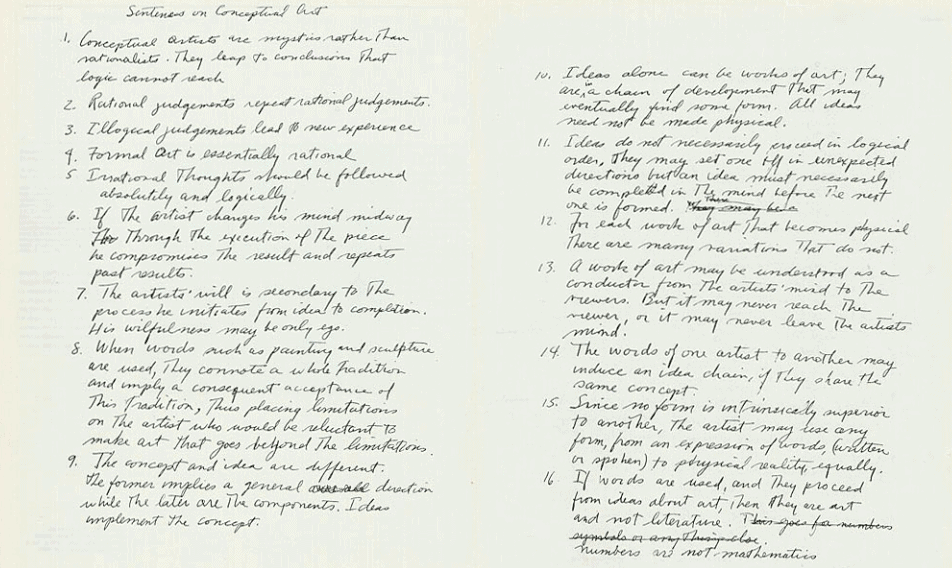
In the early 1960s, the definition of art was being questioned strongly, as was the art establishment. A new generation of artists criticized the art institutions and the ongoing commercialization of art as decoration for the wealthy. Influenced by Ludwig Wittgenstein’s Theory of Language, Logical Positivism, the postmodern semiotic shift of Roland Barthes, and French Structuralism, this new generation of artists started to create art in the form of special information, most often presented with pictures or text. The material realization of the artwork became, inferior to the information of the artwork, dematerializing art, and distancing themselves from art as decoration.
However, visually and materially, the road to Conceptual Art runs through Marcel Duchamp and Minimal Art. In 1917, Marcel Duchamp shocks the world with his infamous Fountain. A urinal becomes a sculpture. Doing so, Duchamp pioneers the ready-made and connects language to visual objects. Daily objects, entering the realms of the art world. (Please note: Marcel Duchamp can arguably be seen as the first Conceptual Artist, however the main art movement in which Duchamp can be categorized is Dadaïsm) With Duchamp, and in the 1960s with Conceptual Art, the conventions of what art can be are questioned and broken open. L’art pour l’art is being pushed of its plinth. The thing that makes the artwork is the context, the ideas, or the conventions of art.
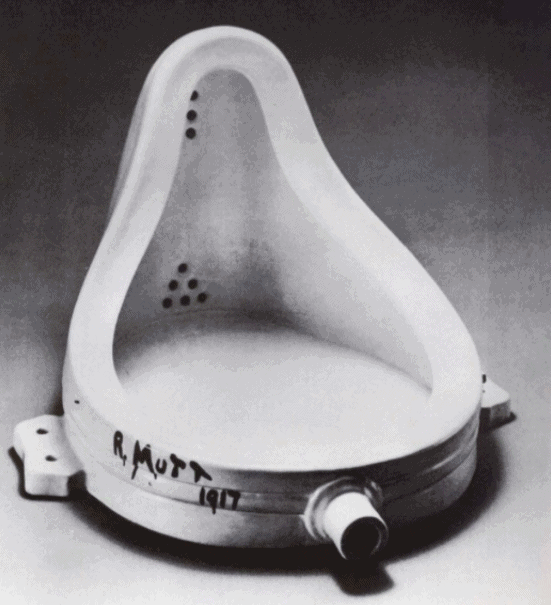
With the emergence of Minimal Art in the 1950s and 1960s, a radical visual language appears in the form of radical simplicity and sheer abstraction. Doing so, abstract expressionist paintings stopped being paintings but became sculptures, which then became installations. As a result, Conceptual Art is built upon the visual and material revolution of Minimal Art. Hence the strong connection between both art movements and their respective most important artists.
But, what about Conceptual Art today? As we have stated in our definition of Conceptual Art, the historical art movement took place during the 60s and 70s of the previous century. However, Conceptual Art continues to manifest itself in contemporary art today. To be clear, what originated in the 1960s and 1970s did not stop to exist in the 1980s or 1990s. It continued to evolve, develop, and adapt, to the ever-shifting scene of art and culture in general. Most often, one refers to contemporary Conceptual Art as Neo-Conceptual Art. In doing so, the term Conceptual Art refers time bound to the historical movement of Conceptual Art in the 60s and 70s.[1]
Ones can distinguish four essential characteristics of Conceptual Art:
(i) The artwork is the idea, not the execution of the idea. However, the execution of the idea – thus the art object – is a vehicular medium to communicate the idea visually. As the emphasis is on the concept of the artwork, the material presence is often reduced to a minimum – influenced by Minimal Art – resulting in a dematerialization of art.
(ii) Conceptual Art breaks open the definition of art. It frees the artist of the traditional conventions, the pretext of beauty and skill, and criticizes the establishment. With the arrival of cubist, suprematist, surrealist, and abstract art, similar questions were already being asked. What makes an abstract painting good, and thus beautiful or well-painted? Conceptual Art states it does not matter if the artwork is beautiful or well made to be good, freeing art from the tyranny of estheticism.
(iii) Visually and materially, Conceptual Art is defined by the tradition of Marcel Duchamp and the ready-made, as well as by the radical simplicity of Minimal Art, introducing uncommon materials and processes, or no materials at all.
(iv) An indirect characteristic of Conceptual Art, consists of its self-conscious character. Conceptual Art creates art that is about art, criticizing the art establishment, and examining its very own reality, truth, practice, and existence, under the influence of postmodern literature.
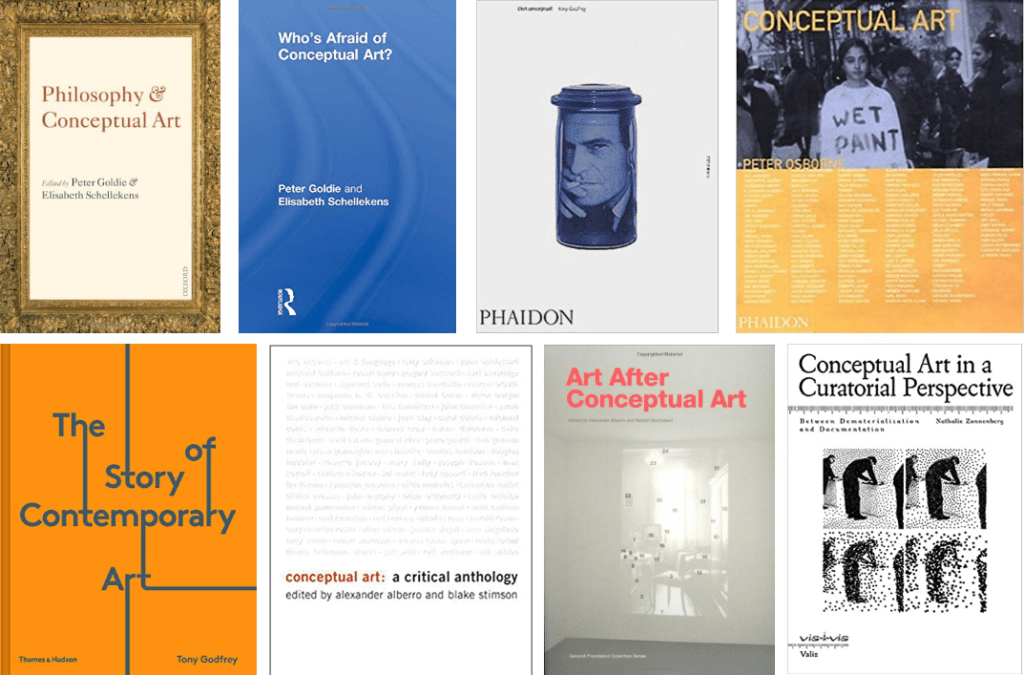
For further reading, we highly recommend the following publications on Conceptual Art:
First, there were conceptual artists; then there was conceptual art. Art history is the history of artists. As a result, in order to learn and understand any art movement, one must know the artists who shaped this art movement. Therefore, we have presented a reasoned and complete overview of the most important artist of the historical art movement of Conceptual Art.
Vito Acconci, born in 1940 in the Bronx, New York, passed away in 2017 aged 77 in Manhattan, the United States of America. Acconci is one of the most influential video, performance, and installation artists of his generation. Throughout his career, he bit himself, burned off his body hair, and much more.
The American conceptual artist’s oeuvre was characterized by ephemeral concepts, encompassing language, sexuality, and bodily movement. His works always contained a sense of poetry or criticism. Moreover, audacity, wit, and provocation were his weapons of choice, pushing the boundaries radically of Conceptual Art.[2]
Acconci achieved international recognition for his boundary-pushing artistic practice. As a result, the American artist has exhibited at the Stedelijk Museum in Amsterdam, the Netherlands; the Museum of Contemporary Art Chicago, the United States and is collected by numerous institutions such as the Museum of Modern Art (MoMA) in New York or the Whitney Museum of American Art.
For further reading on Vito Acconci, we highly recommend Vito Acconci from the Phaidon Contemporary Art Series.
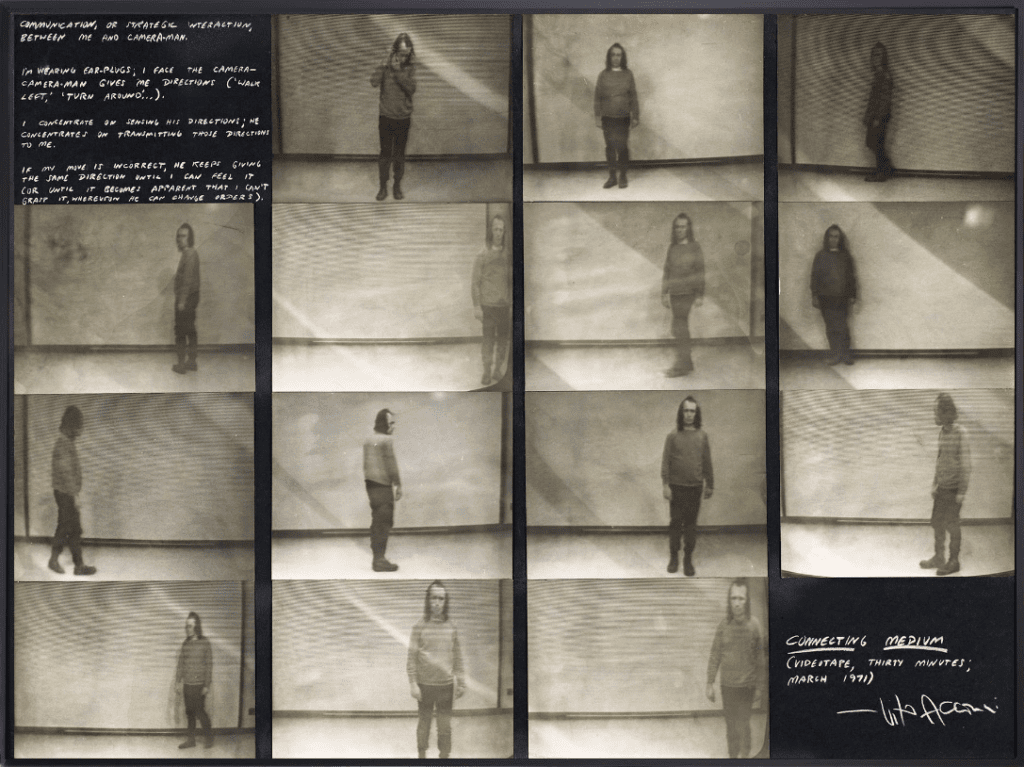
Art & Language is a collaboration of conceptual artists, who pioneered English Conceptual Art. The group was officially founded in 1968, questioning the critical assumptions of modern art as a practice, as well as modern art criticism and recent historiography.
Michael Baldwin, David Bainbridge, Terry Atkinson, and Harold Hurrell founded Art & Language in the late 1960s. Besides producing exemplary works of Conceptual Art, the collective would also publish the journal Art Language.[3]
Numerous artworks by the iconic collaboration are featured in renowned public institutions, encompassing Centre Pompidou in Paris, Centro de Arte Contemporaneo de Malaga, the Espoo Museum of Modern Art in Finland (EMMA), the FRAC Normandie, the Museum Moderner Kunst Stiftung in Vienna, the Museum of Contemporary Art in Los Angeles, the Museum of Modern Art in New York or Tate Modern in London.
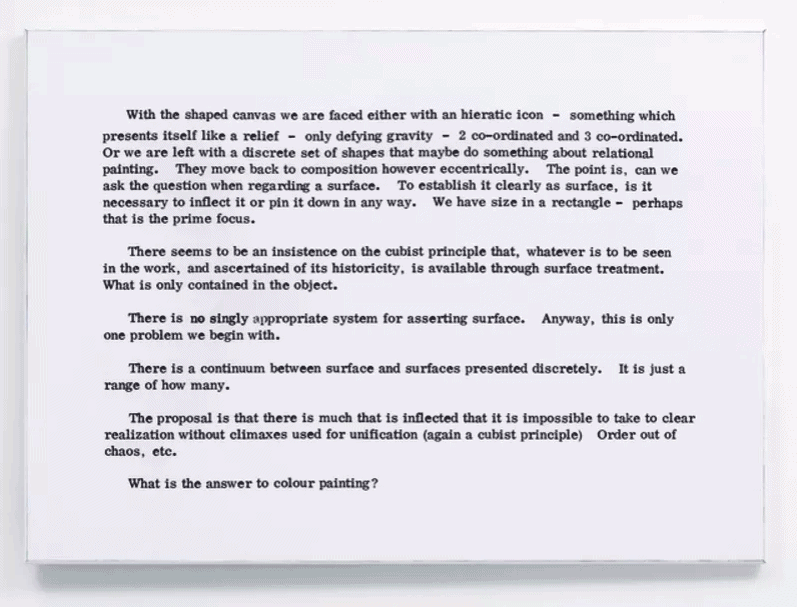
John Baldessari, born in 1931 in National City, California, passed away at the age of 88 in 2020 in Los Angeles, the United States of America. Baldessari was a true pioneer of Conceptual Art. He transformed popular culture and art historical iconography into authentic conceptual artworks.
His oeuvre is marked by an idea-based practice, meditations on the image, language, and appropriation, encompassing the main characteristics of conceptual art. Baldessari worked in film, performance, photography, installation, printmaking, books, sculpture, and installation. Above, we depict one of his most iconic works: Throwing Three Balls in the Air to Get a Straight Line (Best of Thirty-Six Attempts). The title accurately describes the activity and context of the picture, which Baldessari found more important than particularities, depicted subjects, or other visually distracting elements.[4]
Baldessari has exhibited across the globe and is one of the most important artists of the modern and contemporary era. As a result, we encounter his works in major collections such as the Museum of Modern Art (MoMA) in New York, Tate in London, the J. Paul Getty Museum, or the Guggenheim.
For further reading on John Baldessari, we highly recommend his impressive six-volume Catalogue Raisonné.
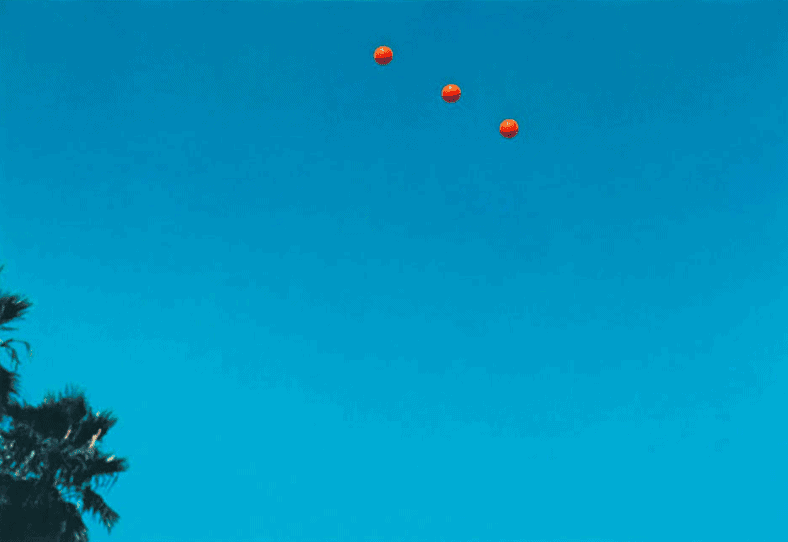
Born in 1936 in the Bronx, New York, Robert Barry is an American artist, best known for his dematerialized artworks. Since the 1960s, Barry uses invisible media for installation and performance artworks. He aims to transcend the limitations of materiality, by creating non-material artworks.
For instance, the conceptual artist has used radio waves as his medium, or word lists, referring to the actual words as invisible things rather than the displayed frames showcasing the words, aiming to evoke a contemplative experience with the viewer by the manner of free association in the activity of interpreting his works.[5]
Barry’s work has been included in major art events such as the Paris Biennale, Documenta in Kassel or the Venice Biennale. His works are included in permanent collections of major institutions, such as the Museum of Modern Art (MoMA) in New York, the Hirshhorn Museum and Sculpture Garden in Washington; the Solomon R. Guggenheim Museum in New York or the Centre Georges Pompidou in Paris.
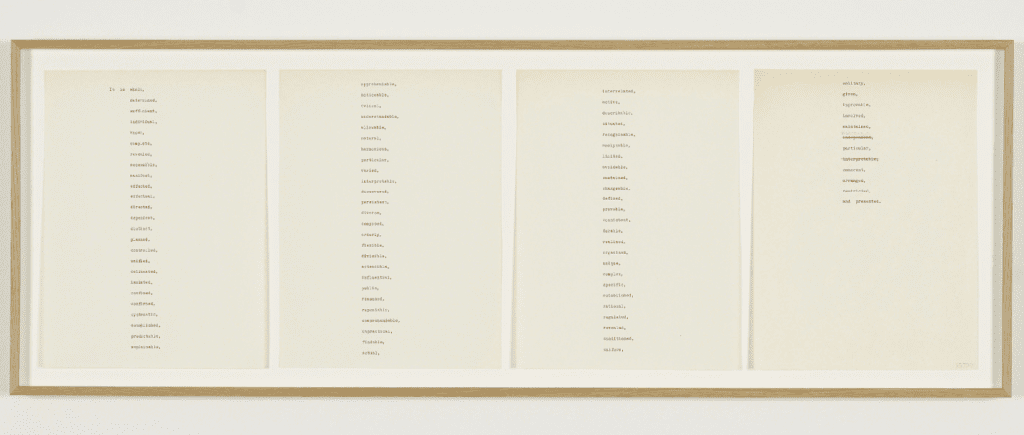
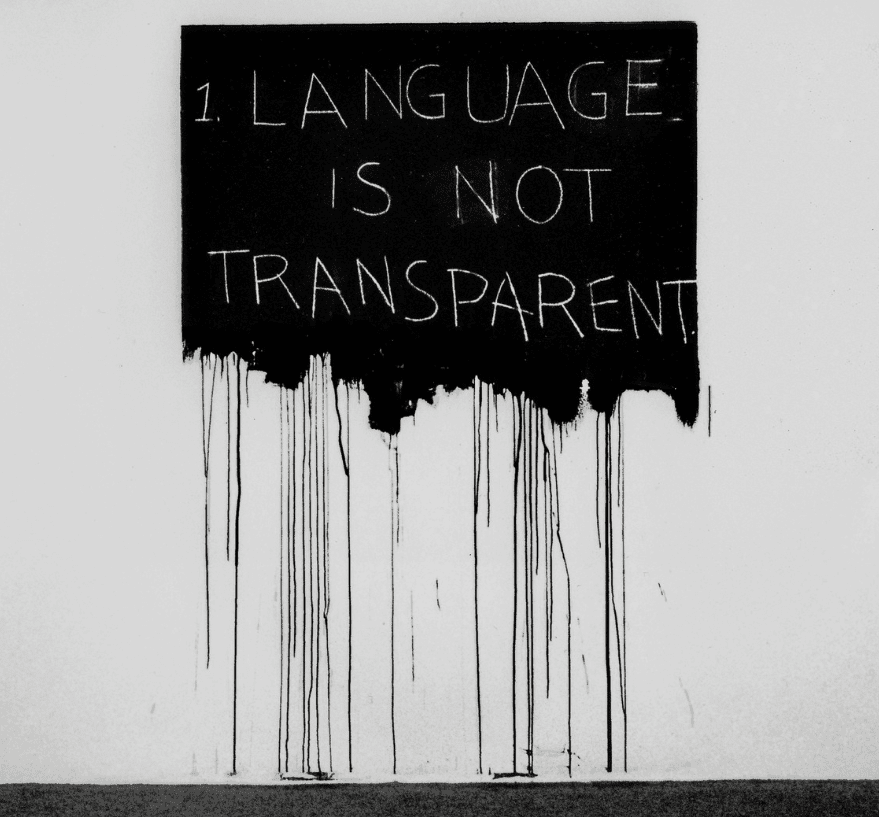
Born in 1940 in Pittsburg, Pennsylvania, Mel Bochner is an American artist living and working in New York City. Bochner is arguably best known for his colorful paintings of words. He pioneered Conceptual Art in the 1960s in New York, among the likes of Joseph Kosuth and Bruce Nauman.
His 1966 show at the School of Visual Arts in New York, titled Working Drawings and Other Visible Things on Paper Not Necessarily Meant to Be Viewed as Art, is often seen as the first exhibition of Conceptual Art. He examines the relationship between language, space, and color, resulting in his characteristic word paintings, and his approach to the gallery walls as the medium.[6]
Bochner has exhibited across the world, exhibited in almost all major art cities such as New York, Los Angeles, London, Berlin, and more. His works are collected by renowned institutions such as the Metropolitan Museum of Art in New York, the Centre Pompidou in Paris, and the Tate in London.
For further reading on Mel Bochner, we highly recommend Mel Bochner: If the Colour Changes.
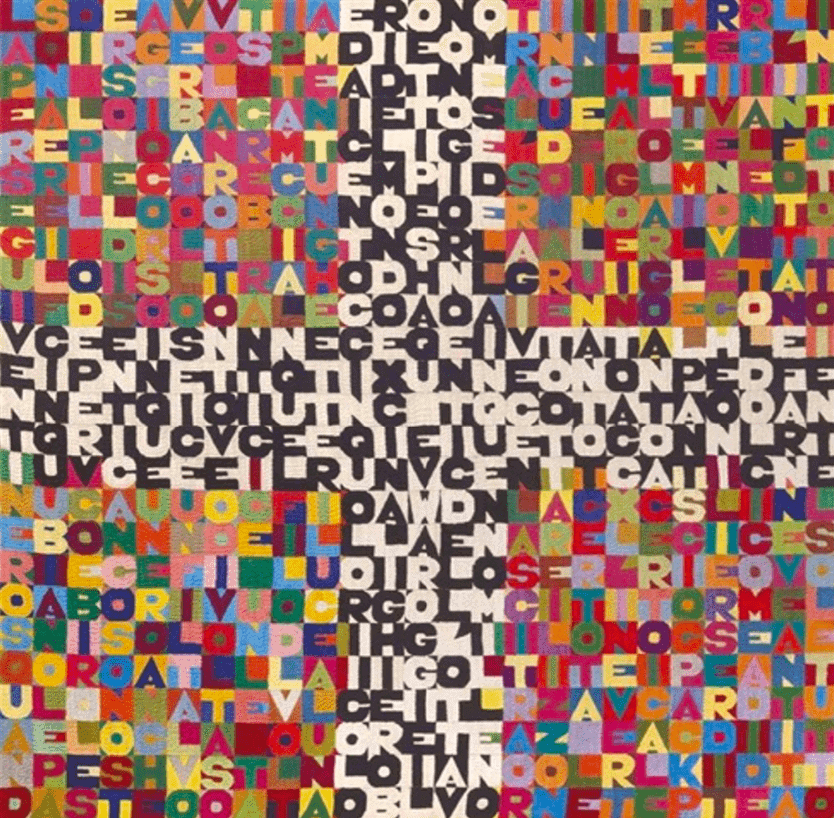
Alighiero Boetti was born in 1940 in Turin, Italy, and passed away in 1994 aged 53 in Rome. Boetti was a conceptual artist but also a member of the Arte Povera movement. His works are marked by the arrival of a renewed artistic language in the 1960s, in which the creative process was more important than the finished object.
Boetti emphasizes the conceptual meaning of the artwork, instead of focusing on its narrative or aesthetic qualities. Arguably, the Italian conceptual artist is best known for his colorful paintings with words and letters, reminiscent of the aforementioned Mel Bochner.
Alighiero Boetti has had solo exhibitions and major retrospectives at industry-leading institutions, such as Magasin Centre National d’Art Contemporain de Grenoble, the Museum of Contemporary Art in Los Angeles, the Museo Nacional de Arte Centro Reina Sofia in Madrid, Tate Modern in London, or the Museum of Modern Art (MoMA) in New York.[7]
For further reading on Alighiero Boetti, we highly recommend Alighiero E Boetti published by the Yale University Press in 2011.
Marcel Broodthaers, born in 1924 in Brussels, Belgium, passed away in 1976 in Cologne, Germany. The Belgian artist was, in fact, a poet before becoming an artist. He was an unsuccessful poet who turned to the arrival of Conceptual Art, aiming to create satirical but poetic artworks.
His works are marked by the use of ready-mades such as egg shells, shells of mussels, chairs, plants, and much more. Broodthaers used language to create a discrepancy between form and content. In doing so, he would create boundary-pushing artworks filled with humor and sharp criticism, encompassing sculpture, film, printmaking, books, and installation.
Broodthaers is one of the most important contemporary artists of his generation, due to his short but powerful career spanning just over a decade. As a result, he has had retrospectives at the Museum of Modern Art (MoMA) in New York, the Centre for Fine Arts (BOZAR) in Brussels, the Museum of Contemporary Art in Los Angeles, and the Museum of Contemporary Art (M HKA) in Antwerp.[8]
For further reading on Marcel Broodthaers, feel free to read our article Marcel Broodthaers Explained: ‘Mussels White Sauce’, or our number one recommendation when it comes to Broodthaers monographs, with Marcel Broodthaers, published by the MoMA with his 2016 retrospective.
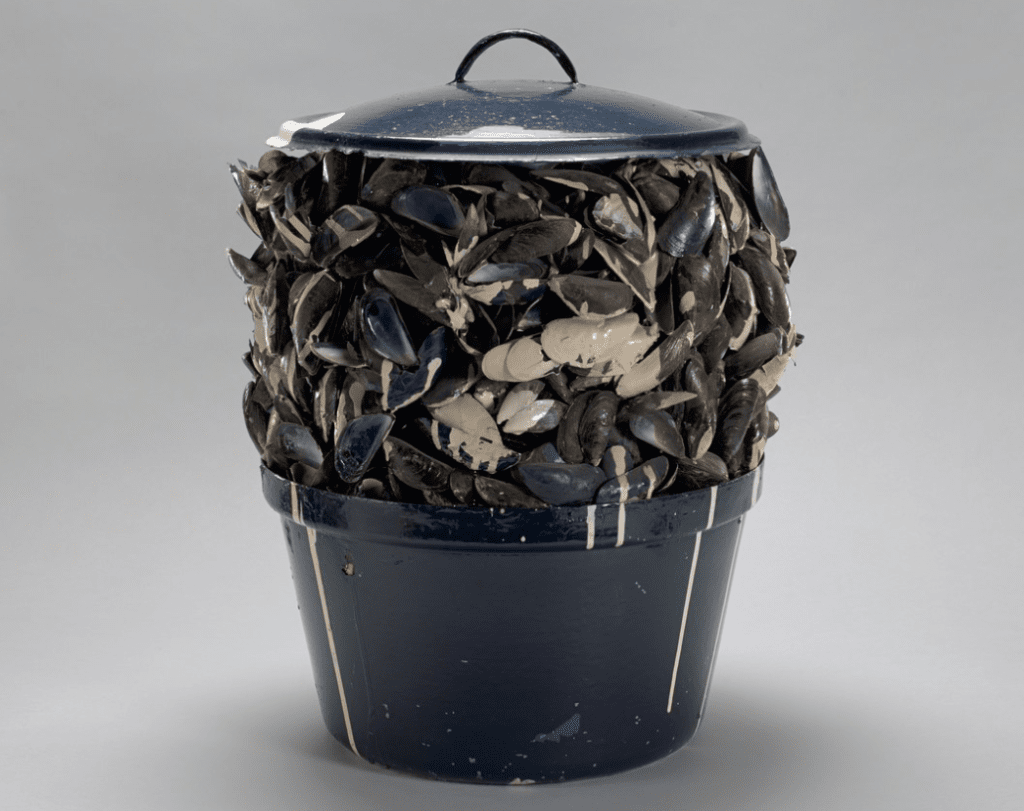
Born in 1935 in Paramaribo, Suriname, Stanley Brouwn is a conceptual artist who passed away in 2017 in Amsterdam, the Netherlands. It is fair to say Brouwn is a somewhat elusive artist, as are his artworks. He has refused to be interviewed or photographed throughout his illustrious career.
This indicates Brouwn is shrouded in mystery, the individual, as well as the art. He was closely connected to Performance Art and Fluxus. He was intrigued by abstraction and the absence of the artist, partly explaining his elusive character. He explored dematerialization and anonymity with a unique artistic oeuvre.
The South-American-born Dutch artist has participated in major art events such as Documenta in Kassel or the Venice Biennale. In 2005, a major retrospective was held at the Van Abbe Museum in Eindhoven, the Netherlands.[9]
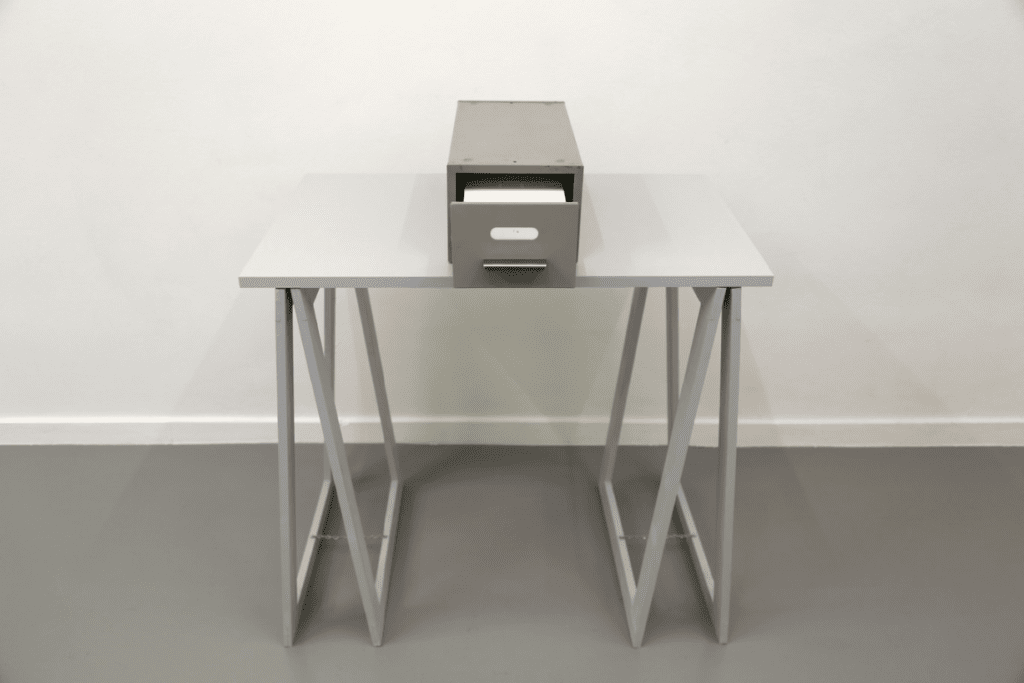
Born in 1938 in Boulogne-Billancourt, France, Daniel Buren is a contemporary artist living and working in Paris. The French conceptual artist focuses on the crossroads of sculpture, installation, and painting, through the manner of creating actions or interventions.
Daniel Buren launched himself onto the Paris art scene in the mid-1960s, strongly critiquing the artist establishment alongside Mosset, Parmentier, and Toroni as the B.M.P.T. group. Buren is internationally known for his iconic motif of vertical stripes. Marked by a distance of 8.75 cm, color stripes, and white stripes alternate, most often in an in situ or public setting. In doing so, the French artist takes on the artwork’s environment but also emphasizes on the importance of the context or circumstances determining the artwork’s nature.
Daniel Buren is one of the most important contemporary artists in the world. He has exhibited at the Guggenheim in New York, Palais Royal in Paris, the Centre for Fine Arts in Brussels, and the Venice Biennale representing France at the French Pavilion.[10]
For further reading on Daniel Buren, we highly recommend Daniel Buren: Underground.
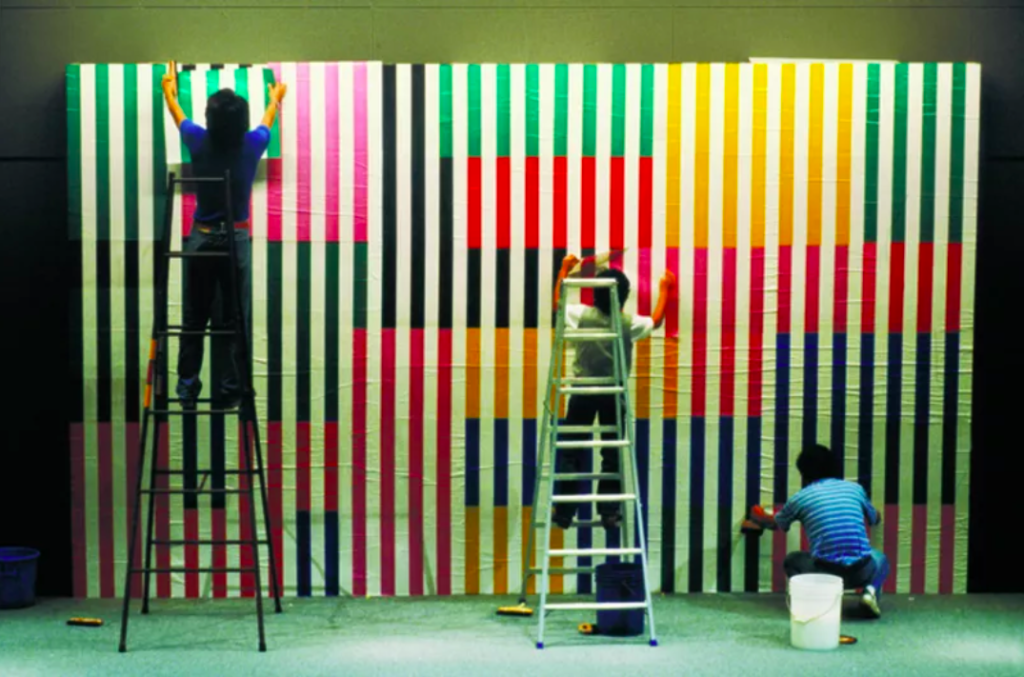
Born in 1941 in Sheffield, England, Victor Burgin is a contemporary artist living and working in Paris, France. In the late 1960s, the British artist received recognition as a conceptual artist with a strong focus on photography.
Whereas many conceptual artists from his generation were only interested in the concept and aimed to dematerialize their artworks, Burgin was interested in both the idea and the material qualities of the artwork. He took on photography in an innovative manner, resulting in photo-text artworks, various prints, but also digital video and 3D models.[11]
Burgin has exhibited at multiple high-end institutions, think of the Museum for Gegenwartskunt in Siegen, the Museo di Fotografia Contemporanea in Milan, Tate Britain in London, the Aspen Art Museum, or the Van Abbemuseum in Eindhoven.
For further reading on Victor Burgin, we highly recommend Victor Burgin: Afterlife.
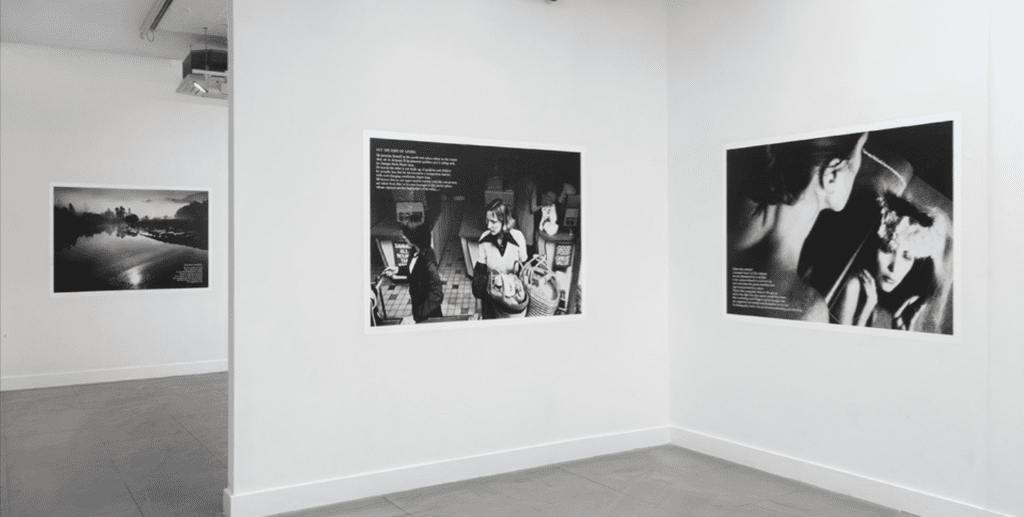
Born in 1941 in München, the German conceptual artist Hanne Darboven passed away in Hamburg in 2009. Shortly after completing her studies in painting in Hamburg, Darboven moved to New York, where she would establish herself as a key figure of Conceptual Art.
Her works are marked by language, encompassing numbers, allowing her to examine time in a neutral language. She is best known for her works in which she showcases the passage of time with calendar-like works on paper.
Hanne Darboven has exhibited at renowned institutions such as the Museum Moderner Kunst Stiftung Ludwig (MUMOK) in Vienna, the Hamburger Bahnhof Museum für Gegenwart in Berlin, the Museum of Modern Art (MoMA) in New York or the Centre Pompidou in Paris.[12]
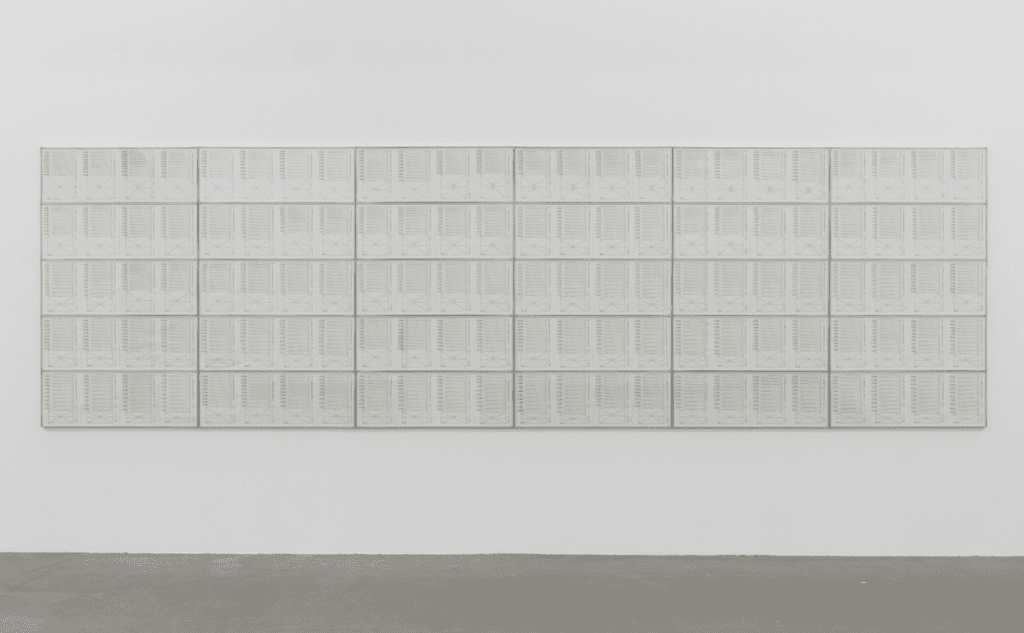
Born in 1941 in Weert, the Netherlands, Jan Dibbets is a conceptual artist strongly connected to Minimal Art, Land Art, and the medium of photography. Arguably, he is best known for his photographic oeuvre, using various techniques such as collage, analog production, and post-production effects.
Jan Dibbets is often inspired by architectural elements. Think of floors, ceilings, or windows, using them as a potential viewing point for a certain concept. A great example is his work from 1969 The Shadows at Konrad Fischer Gallery (see image above). Dibbets captures and examines the slowly shifting shadow in the gallery, as the daylight enters the room and the demarcation of the shadow evolves.
Dibbets has exhibited at industry-leading museums and is featured in renowned institutions such as the Louisiana Museum of Art, the Stedelijk Museum in Amsterdam, Tate Modern in London, the Guggenheim Museum in New York, or the Museum of Modern Art (MoMA) in New York.[13]
For further reading on Jan Dibbets, we highly recommend Jan Dibbets published by Rizzoli in 1989.
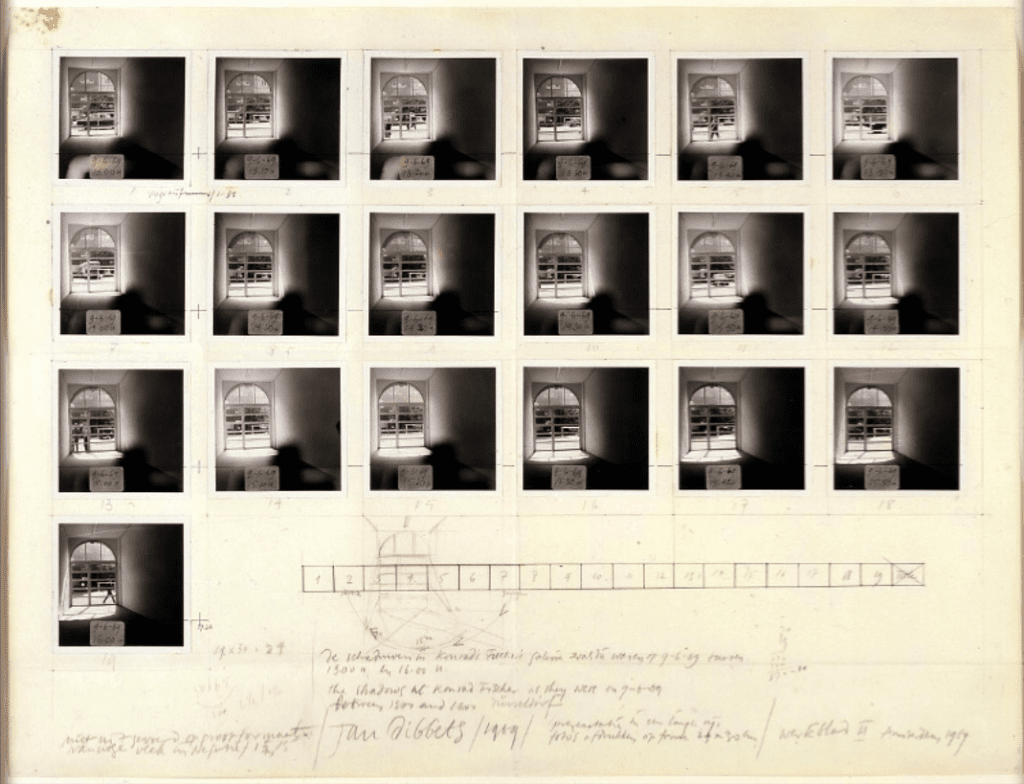
Born in 1941 in Düsseldorf, Hans-Peter Feldmann is a German conceptual artist residing and working in Düsseldorf. One could describe Feldmann as a compulsive collector of ephemera. He searches, collects, and appropriates everyday found imagery and implements them in his artistic oeuvre. Feldmann takes these found images and turns them into new assemblages with an aesthetic and conceptual foundation.
The German artist does not describe himself as an artist. In fact, he goes against the grain when it comes to the art world. He creates unsigned, undated, or limitless editions, resisting the traditional conventions of the art world and its commercial character.
Hans-Peter Feldmann has exhibited at MoMA PS1 in New York, the Kunsthalle Wien Museumsquartier in Vienna, and much more, and is collected by numerous museums encompassing the Museo de Arte Contemporanea in Porto, or the Museum for Moderne Kunst (MMK) in Frankfurt am Main, among others.[14]
For further reading on Hans-Peter Feldmann, we highly recommend Hans-Peter Feldmann: Album.
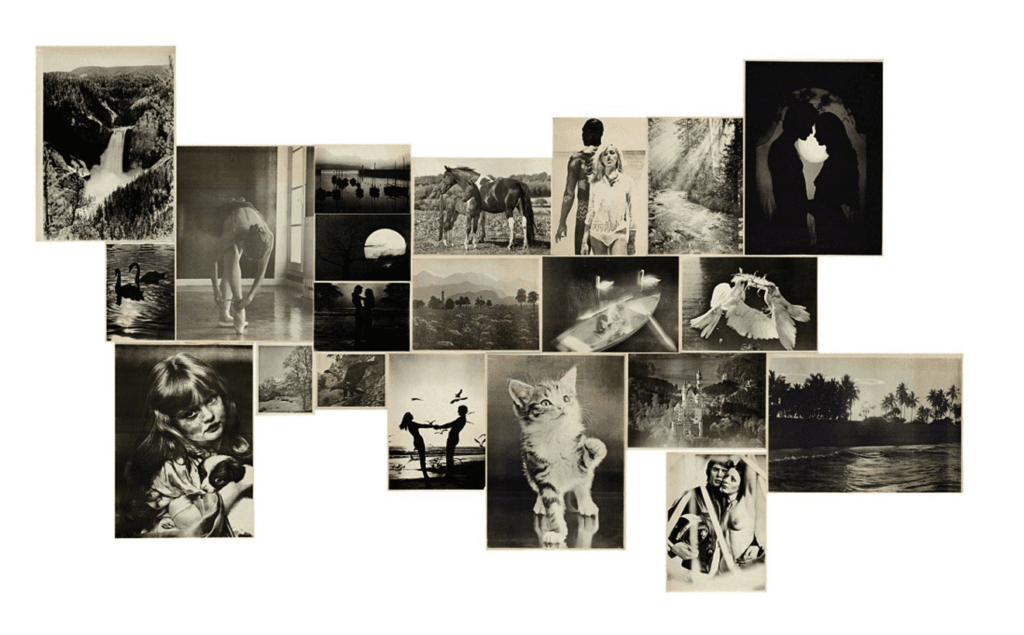
Born in 1942 in Illinois, the United States of America, Dan Graham is one of the most important contemporary artists in the world, living and working in New York. He examines the symbiosis between architectural environments and their inhabitants. A great example can be found in his series Homes of America which was launched in the mid-1960s (see image above).
His varied artistic practice takes form in performance, installation, sculpture, video, photography, and architecture, but also curating and writing. Doing so, Graham strongly contributed to the development of Conceptual Art, but also of Minimal Art and Critique Art, rejecting the limits of the traditional ‘white cube’ art gallery.
Dan Graham exhibited across the globe, encompassing solo exhibitions at the Red Brick Museum in Beijing, the Museum of Contemporary Art in Zagreb, the Cleveland Museum of Art, the Metropolitan Museum of Art in New York, the Museum of Contemporary Art in Los Angeles, or the Kunsthalle in Bern.[15]
For further reading on Dan Graham, we strongly recommend Dan Graham: Catalogue Raisonne.
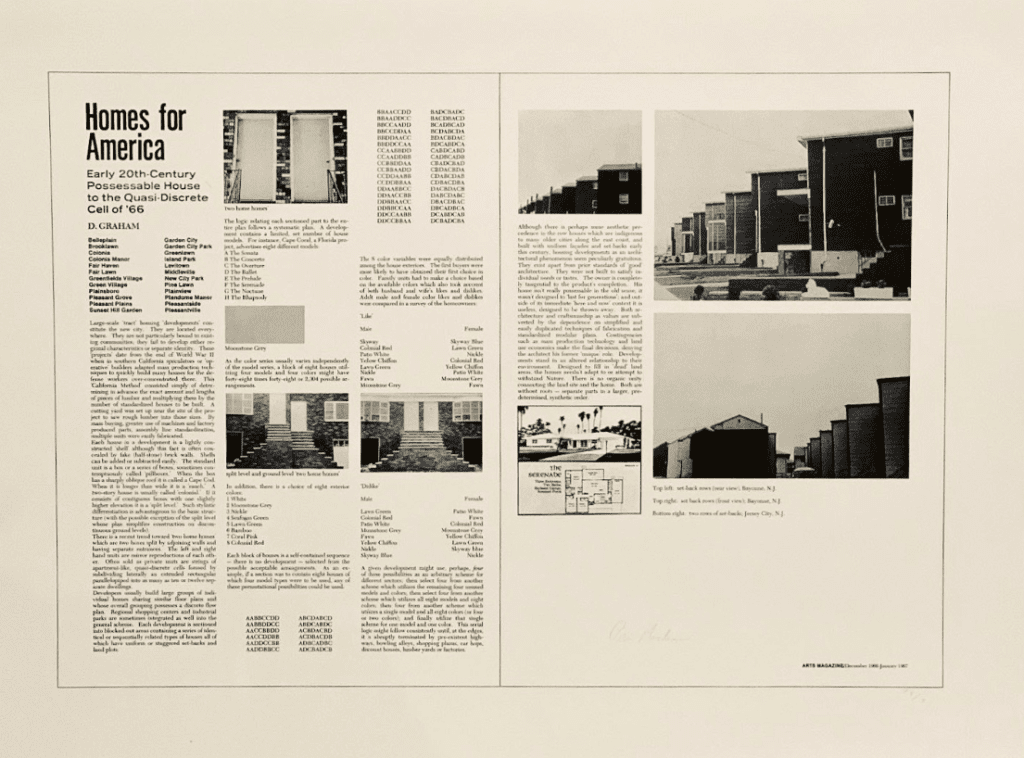
Born in 1936 in Cologne, Germany, Hans Haacke is a conceptual artist residing and working in New York City. Haacke is a true pioneer, not only for Conceptual Art, but also for Kinetic Art, Environmental Art, and Institutional Critique or Critique Art. His works are often site-specific and challenge the viewer to engage, participate, or question invisible structures influencing the artwork, the viewer, and society in general.
The German artist has exhibited at the New Museum in New York, the Museo National Centro de Arte Reina Sofia in Madrid, the Museum Boijmans Van Beuningen in Rotterdam, the Centre Pompidou in Paris or Tate Modern in London.[16]
For further reading on Hans Haacke, we highly recommend Hans Haacke: All Connected.
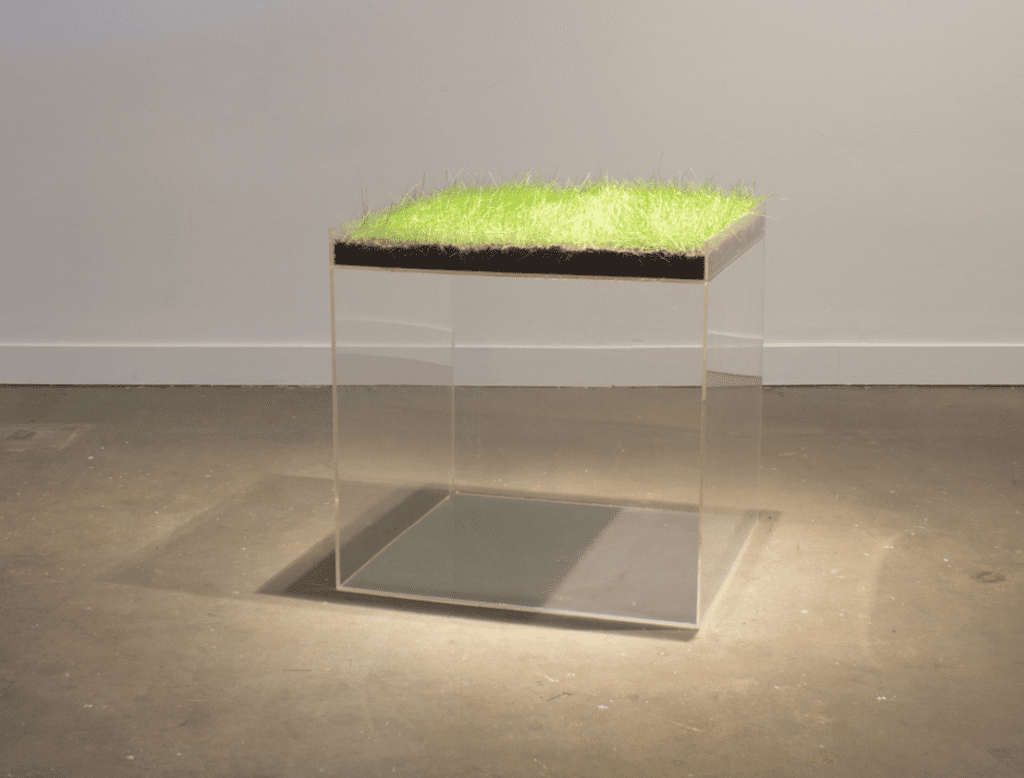
Born in 1950 in Ohio, Jenny Holzer is an American artist best known for her multidisciplinary Neo-Conceptual oeuvre. Holzer incorporates various media in her installations, including marble carving, LED, billboards, printmaking, and more.
Jenny Holzer’s oeuvre is marked by feminism. She provokes a public debate with her challenging installations and public interventions. Doing so, she raises awareness for political inequality, examining power versus powerlessness or violence versus vulnerability. As a result, she is one of the undoubtedly most important artists of her generation.
Holzer exhibited across the globe, encompassing institutions such as Fondation Beyeler in Basel, the Whitney Museum of American Art, the Museum of Contemporary Art in Chicago, the Walker Art Center in Minneapolis, the Guggenheim Museum in New York, and the Dia Art Foundation in New York. Jenny Holzer is included in our list of the greatest female artists of the contemporary era.[17]
For further reading on Jenny Holzer, we strongly recommend Jenny Holzer from the Phaidon Contemporary Art Series.
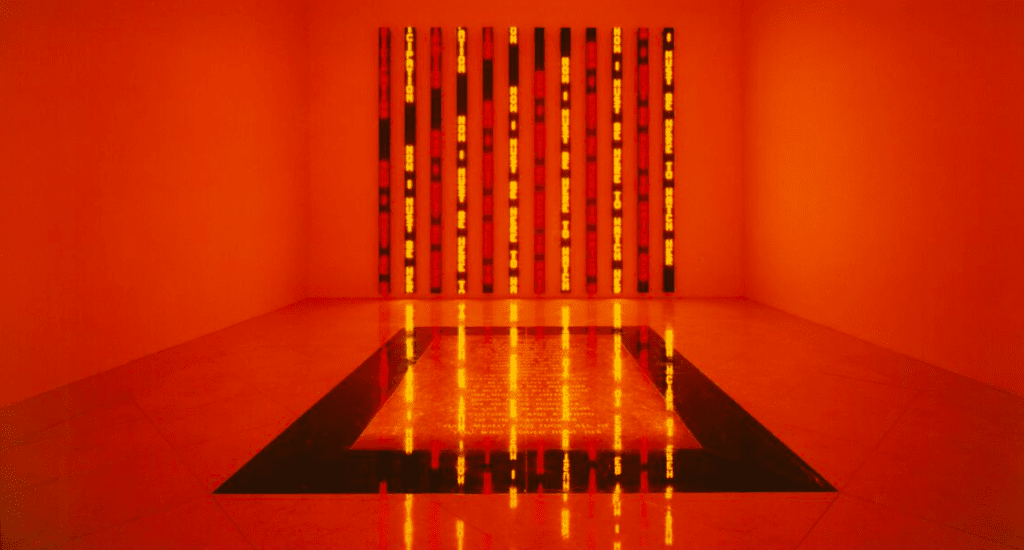
Born in 1924 in Ann Arbor, Michigan, Douglas Huebler was an American conceptual artist who passed away in 1997 in Truro, Massachusetts.
By the late 1960s, Huebler abandoned painting and sculpture. He took on language, creating written statements in combination with photography, maps, or drawings. With these writings, he deconstructed the meaning of visual information. In doing so, language becomes a system or a powerful tool in relation to visual art.
Huebler exhibited at the Centre for Fine Arts in Brussels, the Musée d’Art Moderne et Contemporain in Geneva, and the Camden Arts Centre in London, and participated in Documenta in Kassel.[18]
For further reading on Douglas Huebler, we highly recommend Douglas Huebler: Variable, Etc.
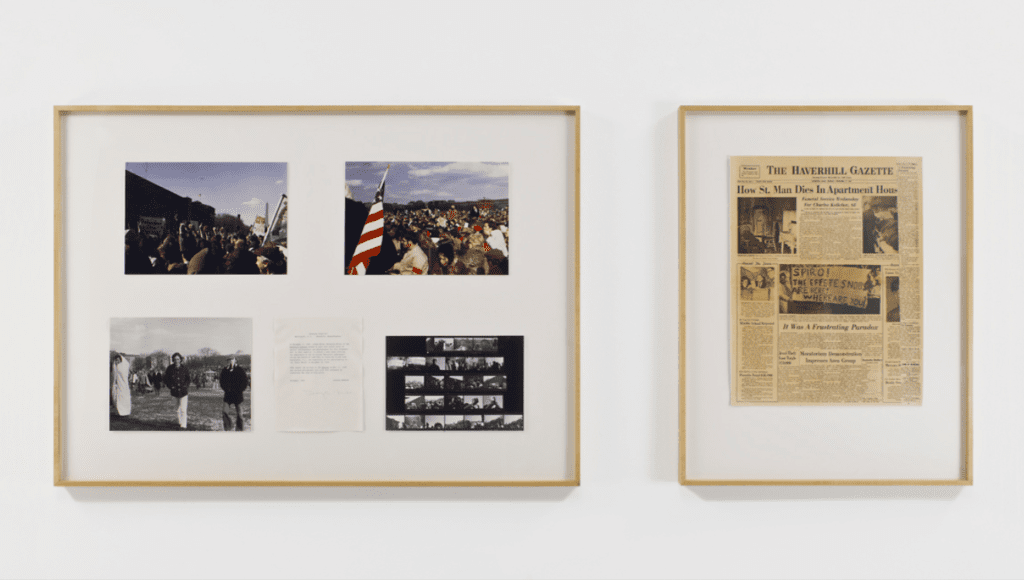
Born in 1933 in Kariya, Japan, On Kawara is a conceptual artist who passed away in 2014.
The Japanese artist is best known for his iconic artwork today, a series of paintings depicting the date of “today”. He always depicted the date in the language and dating conventions of the country in which they were created. The series started in 1966, and he continued the series until his death in 2014, encompassing almost five decades, of exploring time and the documentation of time.
On Kawara has exhibited across the globe and is featured in museum collections such as the Centre Pompidou in Paris, the Kunstmuseum in Basel, the Metropolitan Museum of Art in New York, the Moderna Museet in Sweden, the Museum of Modern Art (MoMA) in New York, the Tate Modern in London or the Whitney Museum of American Art.[19]
For further reading on On Kawara, we highly recommend On Kawara, published by Glenstone Museum in 2013.
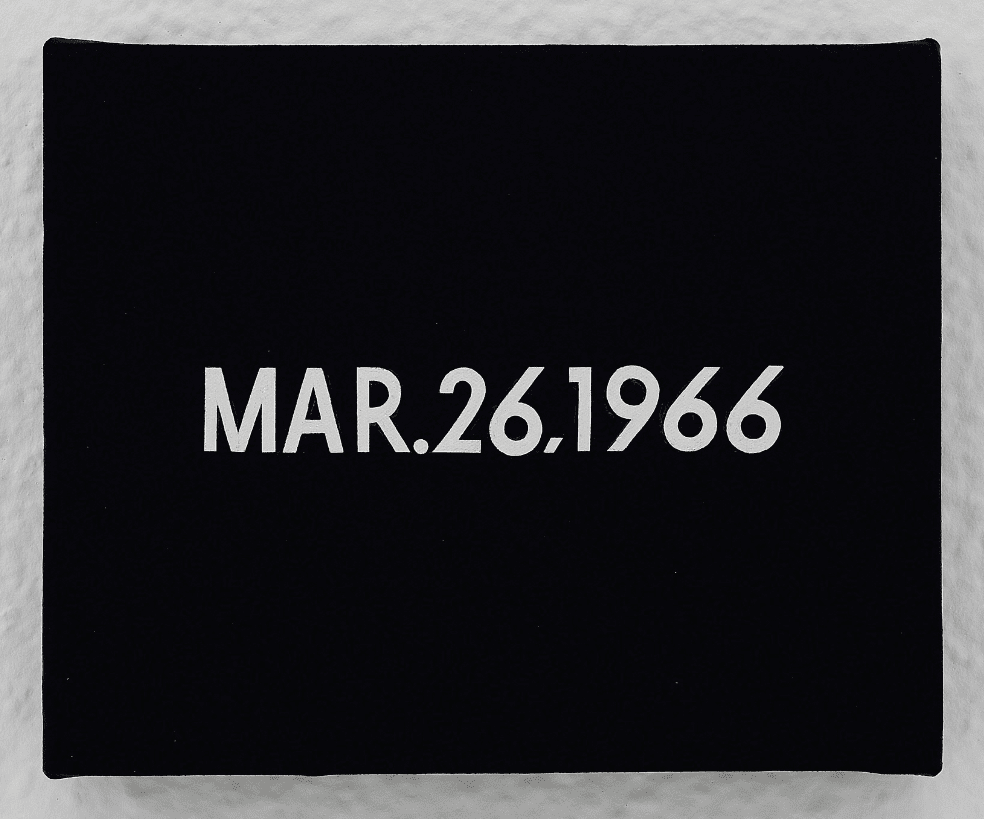
Born in 1945 in Toledo, Ohio, Joseph Kosuth is an American artist living and working between New York and London. Kosuth is arguably one of the most important figures in Conceptual Art. Since the 1960s, he pioneered Conceptual and Installation Art, initiating language-based works and appropriation strategies.
The key element in his oeuvre is the role of language as a structural element for meaning within art. One of his most iconic artworks is the famous One and Three Chairs (see image above) from 1965. The artwork in question is a textbook example of Conceptual Art. He takes on the concept of a chair, showing a depiction of a chair, an actual chair, and the word chair and its definition by the manner of text. In doing so, Kosuth alludes the Plato’s Ideas Theory and its connection to the dominant structuralism in postmodern epistemology.
Being one of the most important conceptual artists in the world, it is no surprise Kosuth has been exhibited and collected by almost all major art institutions. Think of the Museum of Modern Art (MoMA) in New York, the Tate Modern in London, the Solomon R. Guggenheim Museum in New York, the Van Abbemuseum in Eindhoven, the Stedelijk Museum in Amsterdam, or the Centre Pompidou in Paris.[20]
For further reading on Joseph Kosuth, we highly recommend Joseph Kosuth: Interviews.
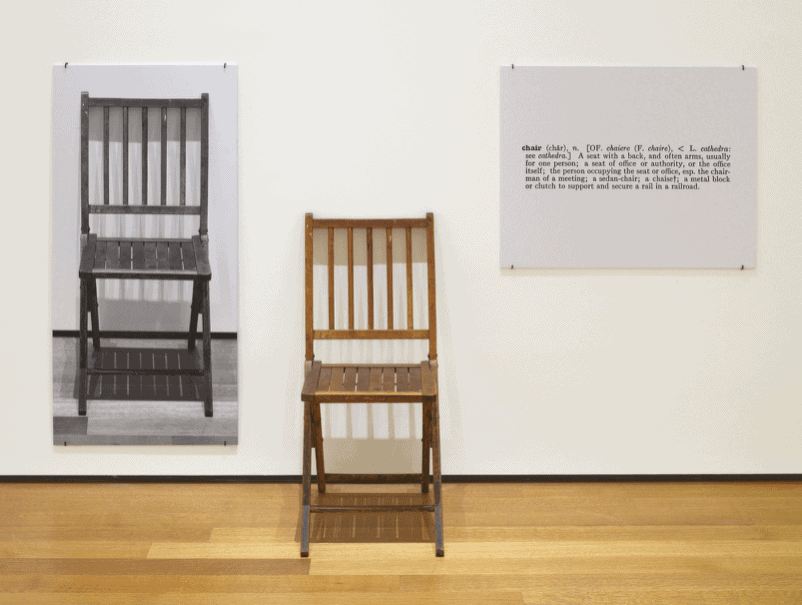
Born in 1933 in Soncino, Italy, Piero Manzoni is a conceptual artist who passed away at the age of just 29 in Milan in 1963. Manzoni was a true pioneer of Conceptual Art. He deconstructed the art world’s convention with his multimedia works. He satirized the art world’s commercial character and capitalism in general with sharp, witty, and humorous artworks.
Undoubtedly, Manzoni is best known for his provocative piece Artist’s Shit, from 1961 (see image above). Manzoni tinned his own excrements and declared them as limited edition works of art, selling them at the daily price of gold, referring to and mocking the artist literally ‘shits gold’.
His works have been exhibited at institutions across the world, encompassing the Musée d’Art Moderne in Paris, the Städel Museum in Frankfurt am Main, the Museu de Arte Moderna in Sao Paulo, and the Museum of Contemporary Art in Los Angeles.[21]
For further reading on Piero Manzoni, we highly recommend Piero Manzoni: When Bodies Became Art.
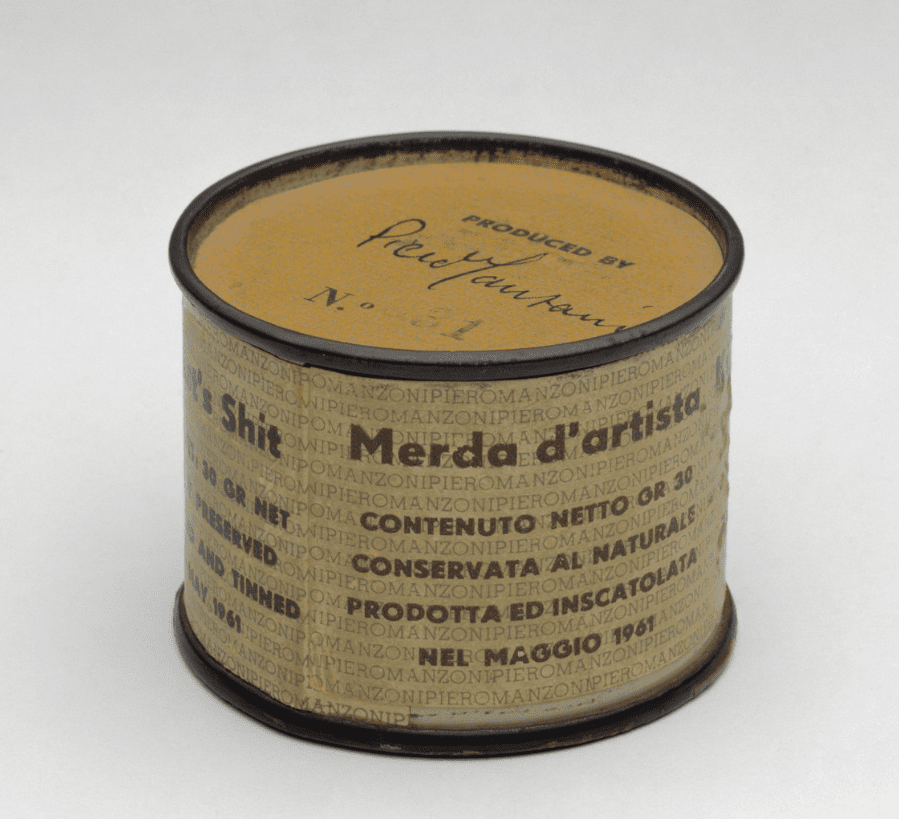
Born in 1928 in Hartford, Connecticut, Sol LeWitt is an American artist who passed away in 2007. Sol LeWitt was a key figure and pioneer in the emergence of Minimal Art and Conceptual art in the late 1950s and early 1960s. LeWitt was interested in the concept or idea of the artwork, instead of the artwork itself. In doing so, his works are executed by others, with the artist’s role being confined to the inventor or conceptor. He provided clear and concise instructions, which would become the standard for installation artworks up to this day.
Furthermore, Sol LeWitt has contributed strongly to the development of Conceptual Art and Minimalism with his writings, continuously challenging new thinking about what art can be. When it comes to his artworks, he is best known for his ‘structures’ in which he creates endless permutations of unfinished structures, such as the cube (see image above), and is also internationally lauded for his unique wall drawings.
LeWitt has had major retrospectives at the San Francisco Museum of Art (SFMOMA), the Museum of Contemporary Art in Chicago, and the Whitney Museum of American Art in New York.[22]
For further reading on Sol LeWitt, we highly recommend Sol LeWitt: A life of Ideas. Further, Sol LeWitt features in our article of The Ultimate Top 100 Most Important Modern and Contemporary Artists.
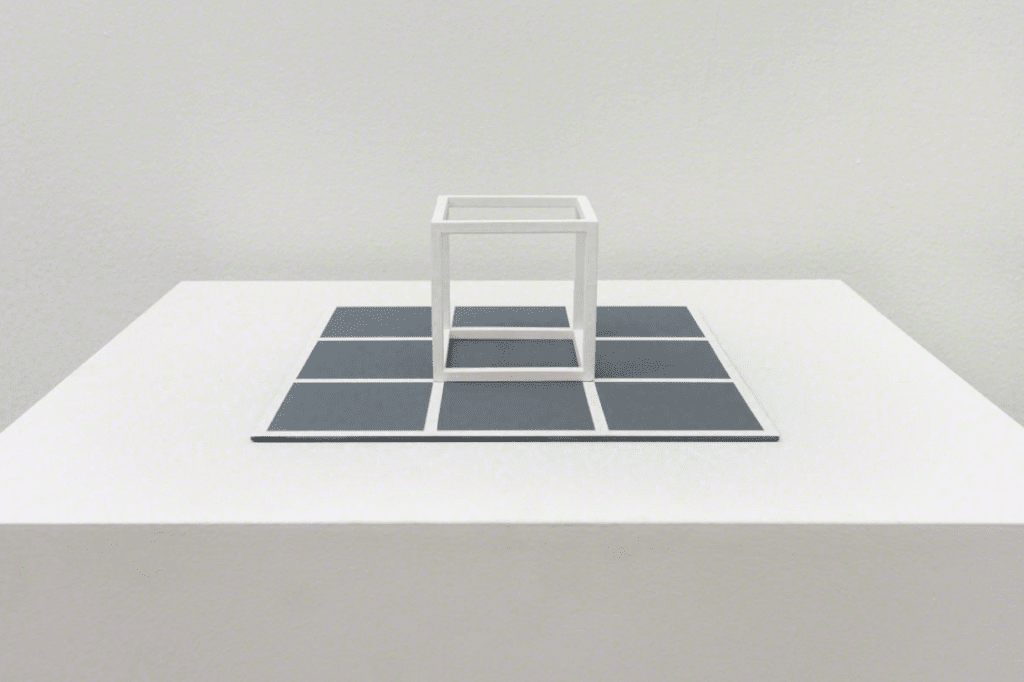
Born in 1943 in New York, Gordan Matta-Clark was an American artist, who passed away in 1978. He was a key figure in the downtown New York art scene in the 1970s.
Matta-Clark is best known for his radical approach, engaging directly with communities in an urban environment. He produced large-scale architectural interventions, transcending Performance Art, Conceptual Art, Process Art, and Land Art.
Gordon Matta-Clark is one of the most important contemporary artists in the world and has exhibited in major museums, including the Museum of Contemporary Art in Chicago, the Stedelijk Museum in Amsterdam, the Kunsthalle in Basel, the Musée d’Art Contemporain in Montréal, or the Whitney Museum of American Art in New York.[23]
For further reading, we strongly recommend Gordon Matta-Clark: You Are the Measure.
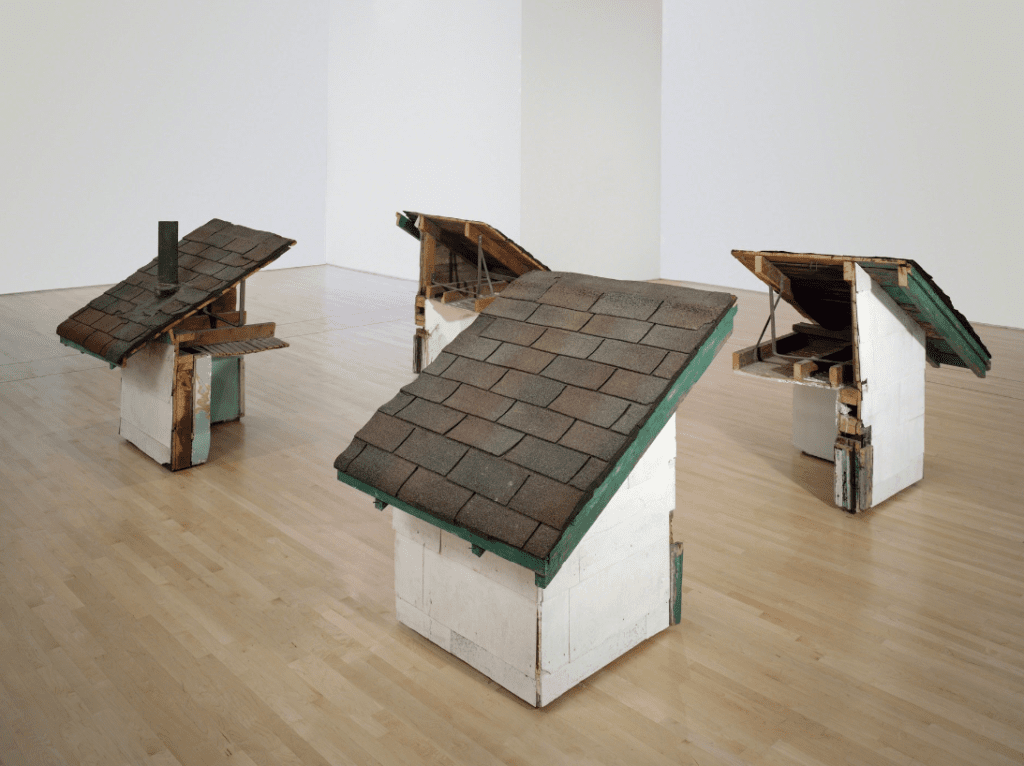
Born in 1941 in Fort Wayne, Indiana, Bruce Nauman is an American artist and one of the most important artists of the contemporary era. He is best known for his experimental oeuvre and interdisciplinary approach, using various media such as sculpture, drawing, printmaking, photography, video, neon, and even sound installation.
Bruce Nauman questions the human experience. He challenged conventions and examined new methodologies to create art and meaning. His artistic practice is occupied with existential dichotomies. Think of life versus death, love versus hate, pleasure versus pain, and so on. He uses the body as the material. A key element throughout his works is the relationship between image, language, art, and the viewer.
The American artist has exhibited at the Scottsdale Museum of Contemporary Art in Arizona, the Bündner Kunstmuseum in Chur, the Museum of Contemporary Art in Florida, the Museum of Contemporary Art in San Diego, the Musée d’Art Contemporain in Montréal, and much more.[24]
For further reading, we highly recommend the monographic publication Nauman.
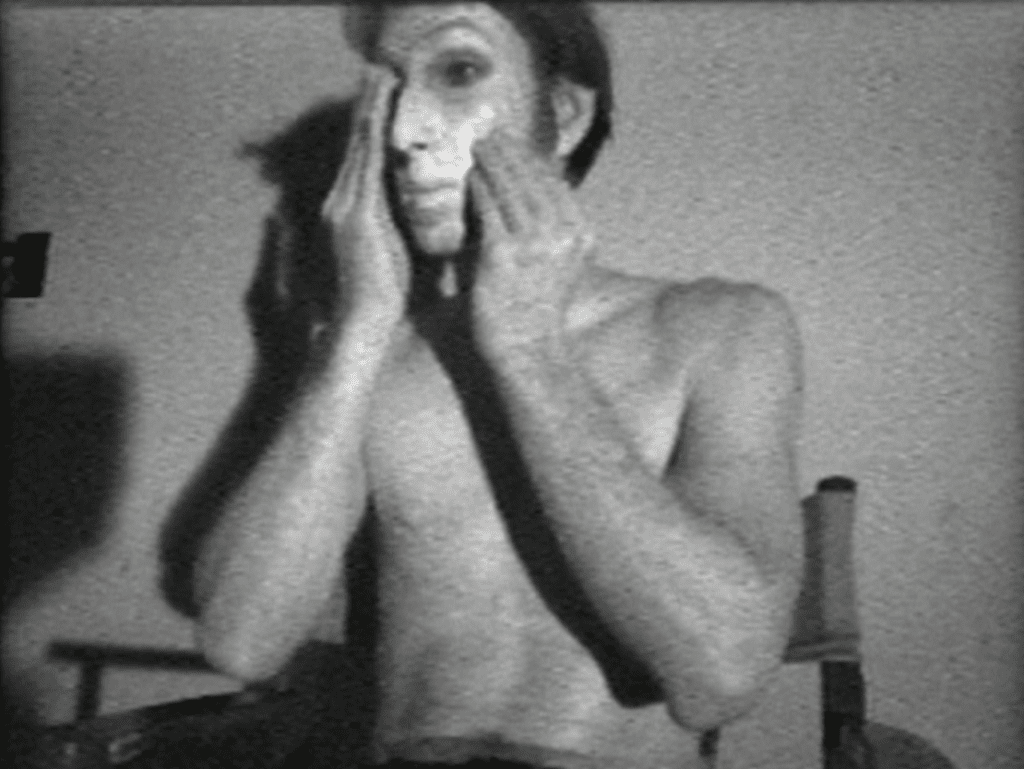
Born in 1948 in New York City, Adrian Piper is an American conceptual artist living and working in Berlin, Germany. She fuses personal experiences, often marked by political issues, pushing her audience to rethink conventions concerning gender, class, and race. Her performances in the late 1960s resulted in a kickstarted career, lauded for her audacity and interactivity.
Adrian Piper has exhibited at the Metropolitan Museum of Art in New York, the Museum of Contemporary Art in Los Angeles, and the Centre Pompidou in Paris.[25]
For further reading on Adrian Piper, we highly recommend Adrian Piper: A Synthesis of Intuitions 1965–2016.
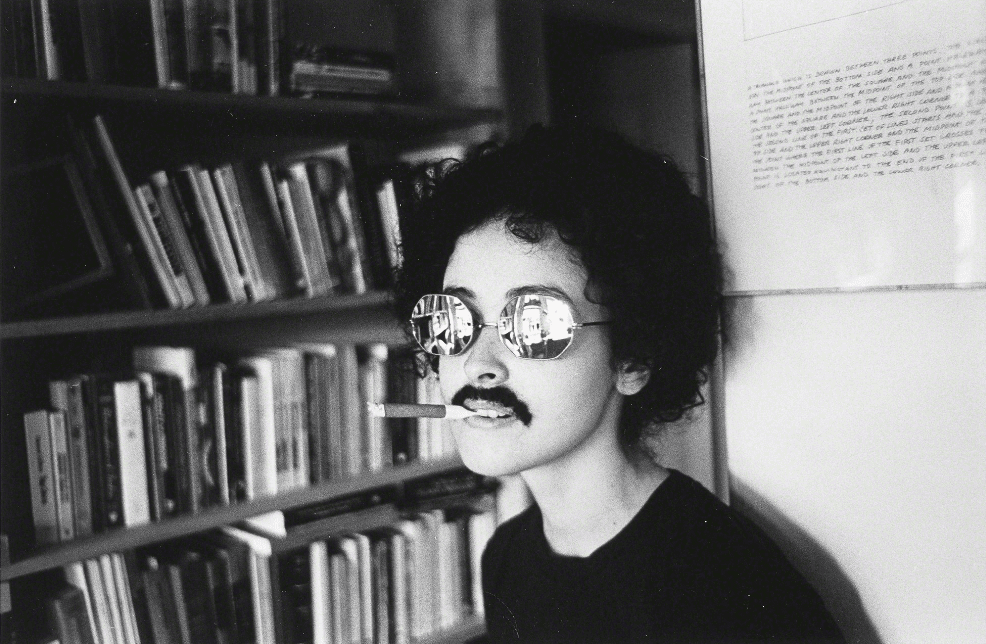
Born in 1942 in the Bronx, New York, Lawrence Weiner is an American conceptual artist who lived and worked between New York City and Amsterdam before he passed away in 2021. Lawrence Weiner is the ideal artist to conclude this list, as he was one of the key figures of the Conceptual Art scene in the late 1960s and is one of the most important artists of his generation.
Weiner redefined the status of the artist. He questioned the conventions of objecthood in relation to the producer, the artist, and its beholder, the viewer. He uses language as his medium, using capital letters in his structures and graphic lines and shapes.
Lawrence Weiner exhibited across the globe at major institutions, including the Milwaukee Art Museum, the Kunsthaus Bregenz, the Villa Panza, the Museu d’Art Contemporani de Barcelona, the Whitney Museum in New York or the Museum of Contemporary Art in Los Angeles.[26]
For further reading on Lawrence Weiner, we highly recommend Lawrence Weiner: As Far as the Eye Can See.
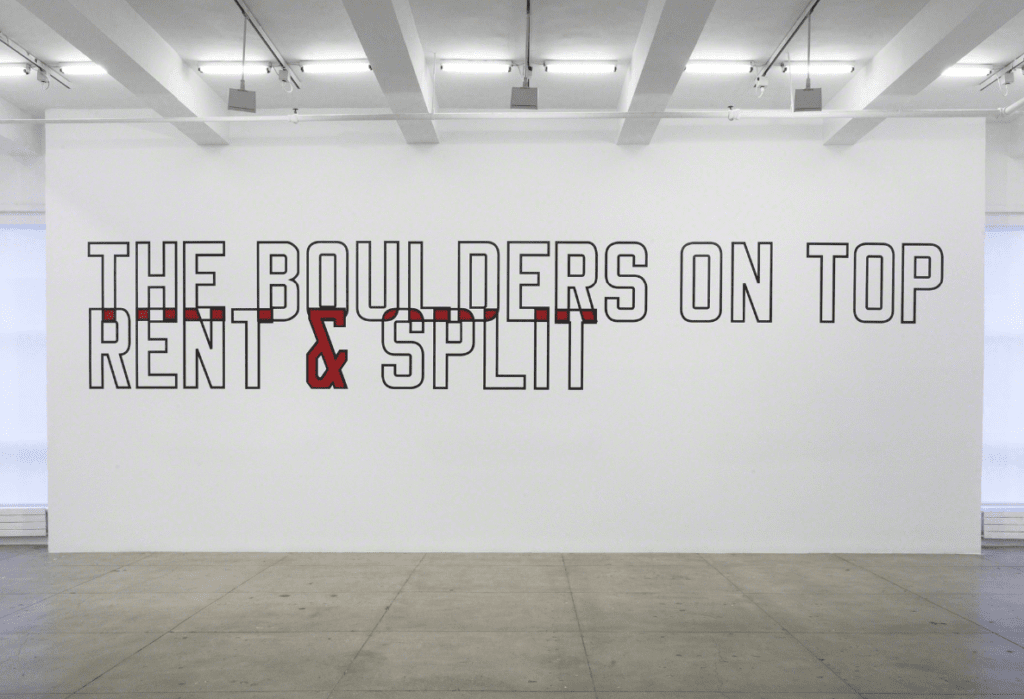
Notes:
[1] Daniel Marzone, Conceptual Art. Taschen: 2005.
[2] Artsy, Vito Acconci at https://www.artsy.net/artist/vito-acconci consulted 20/12/2021.
[3] Tate, Art & Language – Art Term at https://www.tate.org.uk/art/art-terms/a/art-language consulted 20/12/2021.
[4] Artsy, John Baldessari at https://www.artsy.net/artist/john-baldessari consulted 20/12/2021.
[5] Artsy, Robert Barry at https://www.artsy.net/artist/robert-barry consulted 20/12/2021.
[6] Artsy, Mel Bochner at https://www.artsy.net/artist/mel-bochner/ consulted 21/12/2021.
[7] Maruani Mercier, Alighiero Boetti at https://maruanimercier.com/artists/32-alighiero-boetti/ consulted 21/12/2021.
[8] SMAK, Marcel Broodthaers at https://smak.be/nl/kunstenaars/marcel-broodthaers consulted 21/12/2021.
[9] Pallazzo Grassi, Stanley Brouwn at https://www.palazzograssi.it/en/artists/stanley-brouwn/ consulted 21/12/2021.
[10] Xavier Hufkens, Daniel Buren at https://www.xavierhufkens.com/artists/daniel-buren consulted 22/12/2021.
[11] Richard Saltoun, Victor Burgin at https://www.richardsaltoun.com/artists/51-victor-burgin/biography/ consulted 22/12/2021.
[12] Galerie Greta Meert, Hanne Darboven at http://galeriegretameert.com/artists/hanne-darboven/ consulted 22/12/2021.
[13] Artsy, Jan Dibbets at https://www.artsy.net/artist/jan-dibbets consulted 22/12/2021.
[14] Simon Lee Gallery, Hans-Peter Feldmann at https://www.simonleegallery.com/artists/hans-peter-feldmann/ consulted 22/12/2021.
[15] Lisson Gallery, Dan Graham at https://www.lissongallery.com/artists/dan-graham consulted 22/12/2021.
[16] Paula Cooper Gallery, Hans Haacke at https://www.paulacoopergallery.com/artists/hans-haacke consulted 22/12/2021.
[17] Hauser & Wirth, Jenny Holzer at https://www.hauserwirth.com/artists/2857-jenny-holzer consulted 1/12/2021.
[18] Paula Cooper Gallery, Douglas Huebler at https://www.paulacoopergallery.com/artists/douglas-huebler consulted 22/12/2021.
[19] Artsy, On Kawara at https://www.artsy.net/artist/on-kawara consulted 22/12/2021.
[20] Sean Kelly Gallery, Joseph Kosuth at https://www.skny.com/artists/joseph-kosuth consulted 23/12/2021.
[21] Artsy, Piero Manzoni at https://www.artsy.net/artist/piero-manzoni consulted 23/12/2021.
[22] Lisson Gallery, Sol LeWitt at https://www.lissongallery.com/artists/sol-lewitt consulted 23/12/2021.
[23] David Zwirner, Gordon Matta-Clark at https://www.davidzwirner.com/artists/gordon-matta-clark/biography consulted 23/12/2021.
[24] Gagosian, Bruce Nauman at https://gagosian.com/artists/bruce-nauman/ consulted 23/12/2021.
[25] Lévy Gorvy, Adrian Piper at https://www.levygorvy.com/artist/adrian-piper/ consulted 23/12/2021.
[26] Marian Goodman Gallery, Lawrence Weiner at https://www.mariangoodman.com/artists/70-lawrence-weiner/ consulted 23/12/2021.
Last Updated on January 2, 2024

Trends in Contemporary Art

A Complete Guide

Touching the Invisible

A Reasoned Anthology